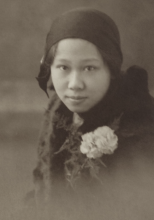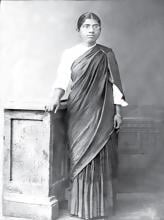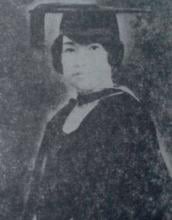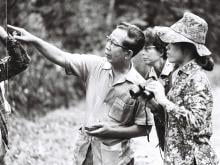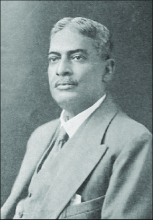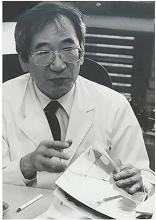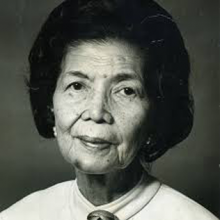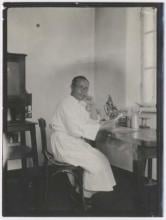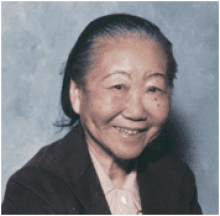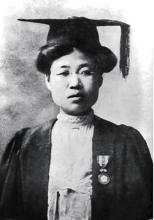Medicine
News

30 Jan 2008
Summaries of newsworthy papers including: New cells’ effect on learning, Sugar rush to protect the heart, DNA blueprint for crystallization, Hurricanes: The temperature contribution, Piezoelectric pressure point, Controlling a double-edged sword, and Insight into a doublet of giant earthquakes

27 Jan 2008
Summaries of newsworthy papers in Nature and Nature research journals including: When microbes ruled the Earth, Making waves in the ionosphere, Amyloid inhibitors are aggregates too, An amicable separation, Mother knows best, Sleep onset and duration uncoupled
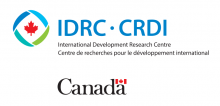
25 Jan 2008
“On the heels of avian influenza, the medical community has realized that, if you want to deal with emerging diseases, 75% of which come from animals, you have to deal with the animal side of the equation.”

25 Jan 2008
New capacity and fresh insights are among the goals of the Teasdale-Corti global health program that aims to expand the influence of research over a wide range of health issues.

25 Jan 2008
Molecular-scale rearrangements influence how receptors transmit their message, adding another layer of complexity to the regulation of cell signaling

25 Jan 2008
Japanese researchers unravel how cells move to form the brain

23 Jan 2008
Summaries of newsworthy papers include The Mississippi’s carbon footprint, Repeat Offenders – are scientists publishing more duplicate papers?, The power of Jupiter’s jets, DARPA at 50, Growth of Hawaiian volcanoes, Towards realizing the benefits of spin and Insight into a tropical ecosystem

23 Jan 2008
Plants have evolved disguise proteins to cheat pathogenic bacteria.

20 Jan 2008
Summaries of newsworthy papers include Animals: Turn up the heat on sex determination, Volcanoes under ice, From little seeds do laser beams grow, The dark side of X-ray imaging, A stem cell-based therapy to treat muscular dystrophy, Genetic variants associated with susceptibility to lupus
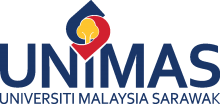
19 Jan 2008
A potentially fatal species of malaria is being commonly misdiagnosed as a more benign form of the disease, thereby putting lives at risk, according to research funded by the Wellcome Trust and the University Malaysia Sarawak.

18 Jan 2008
The RIKEN Plant Science Center in Yokohama hosted an international symposium on November 20 that focused on the use of African plant resources. The symposium was held under the auspices of the Japan Society for the Promotion of Science and the Japan Science and Technology Agency.

18 Jan 2008
A research team with members from Japan and the US has discovered a means of inducing persistent immunity to tumors in mice. In the long term, the work could lead to a vaccine against certain tumors in people.

18 Jan 2008
A new mouse model of human leukemia may provide fresh insights on the genesis of the disease

16 Jan 2008
Summaries of newsworthy papers include Containing uranium, Tethering HIV, Regenerating hair in waves, Listeria dodges host’s immune response, Identifying skin cancer starter cells, Encoding biopolymers with instructions, RNA and tumour suppression and Sing-a-long-a-neuron

13 Jan 2008
Summaries of newsworthy papers include Receptor signalling in pairs, To mend a failing heart, Seven novel loci for plasma lipid levels, Genetics of height and bone disease, Sleep provides a window into memory, Seeing how viruses encounter immune cells and Transmitting HIV through T cell nanotubes

12 Jan 2008
Statistical analyses demonstrate variability in association between genes and osteoarthritis links to ethnicity. Genes can affect disease differently depending on one’s ethnicity, concludes a team of international researchers reporting in the July 2007 issue of Human Molecular Genetics[1].

10 Jan 2008
Natural chemicals found in green tea may be a safe and easily administered neuroprotective treatment for Parkinson's disease

10 Jan 2008
Summaries of newsworthy papers include Cancer: MicroRNAs that reduce metastasis, Space: Antimatter close to home, Cancer biology: Suppressing a leukaemia suppressor, Immunodeficiency: A shortage of oxygen to beat infection, Nanotechnology: Roughened silicon nanowires take the heat and The genetics of sex

07 Jan 2008
Many of the historic moments in modern science can now be explored online. The archive of the first eighty years (1869-1949) of the journal Nature, the world's foremost weekly scientific journal, goes live today. Every article published in Nature, back to volume 1, issue 1 will now be available online.

06 Jan 2008
Summaries of other newsworthy papers include Walking after spinal rewiring in Nature Medicine and First sign of trouble in Nature Immunology

04 Jan 2008
Researchers identify a mechanism controlling the function of an important cellular protein
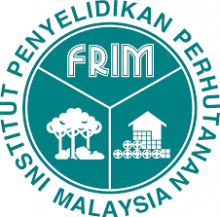
03 Jan 2008
Garcinia atroviridis known in Malaysia as Asam Gelugor is popularly used as seasoning in curries, sour relish and fish dressing. FRIM researchers have discovered that it also has the ability to help reduce weight and have developed it into a herbal tea.

03 Jan 2008
Diabetes mellitus is one of the global health problems in both developed and developing countries. One of the complications is diabetic retinopathy, a leading cause of blindness. This research suggest that a compound extracted from a Himalayan medicinal plant has the potential to prevent this.

02 Jan 2008
Summaries of newsworthy papers including - Tumour incidence: When three is better than two, Metabolic engineering: Brewing better biofuels, Magnetism: Poles apart in spin ice, Astrophysics: Newborn extrasolar planet still tied to parent star, Arctic climate: Warming up and Cancer: Breast cancer goes NUMB

23 Dec 2007
A team of Japanese scientists has developed a method to ‘fish’ for specific DNA-base problems that are responsible for causing cancer. The method can also be used to identify the exact site and measure the extent of the disorder.

23 Dec 2007
Researchers link skeletal disorders with sugar chain production

23 Dec 2007
Forest Research Institute of Malaysia's anti-cancer screening program carried out at their Centre for Proteomic Research screened 31 plant species for anti-breast cancer activity. An active plant was found to have notable anti-proliferative activity against breast cancer cells.

23 Dec 2007
Summaries of newsworthy papers include Trp’ing the copper fantastic, Compound screening gets more specific, Helium on the brane, Mechanical memories, The workings of deep brain stimulation, Foamy viruses join the gene therapy toolbox, Gene mutation affecting human brain size, The protective effects of brain damage and Gaining entry into the brain

19 Dec 2007
In what will become an annual event, Nature is singling out a "Newsmaker of the Year". The newsmaker in question is Rajendra Pachauri, the Indian engineer and economist who currently chairs the Intergovernmental Panel on Climate Change (IPCC). Next-generation sequencing has been selected as the Method of the Year 2007 by Nature Methods.

19 Dec 2007
Summaries of newsworthy papers including: Terrestrial ancestors of whales, Looking for cancer in all the right places, Optics: A fine-tooth comb, Stem cells: A case of mistaken functional identity, Superconductors: Who needs phonons?, Palaeoclimate: Early warming signs, Dating the Moon's formation and Making the most of melodious mistakes
Researchers
Sorry, no researchers coming up for this topic.
- « first
- ‹ previous
- 1
- 2
- 3
- 4
Giants in history
Michiaki Takahashi (17 February 1928 – 16 December 2013) was a Japanese virologist who developed the first chickenpox vaccine.
Irene Ayako Uchida’s (8 April 1917 – 30 July 2013) strides to understand genetic diseases such as Down syndrome paved the way for early screening of chromosomal abnormalities in foetuses.
Baron Kitasato Shibasaburo (29 January 1856 – 13 June 1931) was a Japanese physician and bacteriologist whose work led to a new understanding of preventing and treating tetanus, diphtheria and anthrax.
Maggie Lim (5 January 1913 – November 1995) was a Singaporean physician who promoted family planning and expanded the access to clinics to improve the quality of life for mothers and children in Singapore’s early days.
By isolating soil microorganisms and studying the compounds they produce, Satoshi Omura (born 1935) discovered almost 500 organic compounds with unique properties that were produced by these microorganisms, including many new antibiotics.
The founder of the Adyar Cancer Institute in India, Muthulakshmi Reddy (30 July 1886 – 22 July 1968), fought to uplift women and girls from impoverished situations.
Chinese-American virologist and molecular biologist Flossie Wong-Staal (27 August 1946 – 8 July 2020) was the first scientist to clone HIV and determine the function of its genes.
Maharani Chakravorty (1937 – 2015) was one of India’s earliest molecular biologists whose research paved the way for advances in the treatment of bacterial and viral infections.
Archana Sharma (16 February 1932 - 14 January 2008) conducted research into plant and human genetics that expanded the understanding of both botany and human health. In relation to botany, she uncovered the means by which asexually-reproducing plants evolve into new species.
The first Thai woman to receive a degree in medicine, Margaret Lin Xavier (29 May 1898 – 6 December 1932), is best remembered for her compassion towards her less privileged patients.
In 1915, pathologist Katsusaburo Yamagiwa and his research assistant Koichi Ichikawa became the first to prove that chronic exposure to chemicals can cause cancer.
In 1915, Koichi Ichikawa along with pathologist Katsusaburo Yamagiwa became the first to prove that chronic exposure to chemicals can cause cancer.
Husband and wife team, Kimishige (3 December 1925 – 6 July 2018) and Teruko Ishizaka (28 September 1926 – 4 June 2019) discovered the antibody class Immunoglobulin E (IgE) that triggers allergic reactions. They also discovered that IgE antibodies attach to white blood cells, known as mast cells, releasing histamine, which causes allergic reactions.
Husband and wife team, Kimishige (3 December 1925 – 6 July 2018) and Teruko Ishizaka (28 September 1926 – 4 June 2019) discovered the antibody class Immunoglobulin E (IgE) that triggers allergic reactions. They also discovered that IgE antibodies attach to white blood cells, known as mast cells, releasing histamine, which causes allergic reactions.
Japanese chemist Takamine Jokichi (3 November 1854 – 22 July 1922) founded the Tokyo Artificial Fertilizer Company, where he isolated a starch-digesting enzyme (named takadiastase) from the fungus Aspergillus oryzae.
Ground-breaking cancer researcher Kamal Jayasing Ranadive (8 November 1917 – 11 April 2001) advanced the understanding of the causes of leukaemia, breast cancer and oesophageal cancer through the use of animal models. She was also among the first to recognise how susceptibility to cancer is linked to tumour-causing interactions between hormones and viruses.
The research of Filipino pharmaceutical chemist Luz Oliveros-Belardo (3 November 1906 – 12 December 1999) focussed on essential oils and other chemicals derived from native Philippine plants.
Thai physician and conservationist Boonsong Lekagul (1907 – 1992) made major contributions to the preservation of his country’s wildlife.
Indian scientist and physician Upendranath Brahmachari (19 December 1873–6 February 1946) is best known for creating a drug called Urea Stibamine, used to safely and reliably treat visceral leishmaniasis (or Kala-azar), a severe infection caused by the Leishmania parasite.
Filipino chemist and pharmacist Manuel A. Zamora (29 March 1870 – 9 July 1929) is best remembered for his discovery of the tiki-tiki formula to combat beriberi, a disease caused by Vitamin B1 deficiency.
Korean parasitologist Seung-Yull Cho (16 November 1943 – 27 January 2019) is remembered largely for his pioneering works to control infections caused by helminthic parasites and his contribution to journal publishing.
Fe Villanueva del Mundo (27 November 1911 – 6 August 2011) was a Filipina paediatrician who founded the Philippines’ first paediatric hospital.
After witnessing death and suffering as a youth in his home village during World War II, Nguyễn Tài Thu (6 April 1931 – 14 February 2021) set his sights on alleviating pain by becoming a doctor. After studying Traditional Chinese Medicine in China in the 1950s, Thu returned to Vietnam to serve in military hospitals. Eventually, he became the country’s foremost practitioner of acupuncture, a technique he first learned by inserting needles into himself.
Minoru Shirota (April 23, 1899 – March 10, 1982) was a Japanese microbiologist who invented the popular fermented drink Yakult.
Wu Lien-teh (10 March 1879 – 21 January 1960) was a Malaysian-born doctor who invented a mask that effectively suppressed disease transmission. Winning the prestigious Queen’s Scholarship enabled Wu to become the first Chinese student to study medicine at the University of Cambridge.
David T. Wong (born 1936) is a Hong Kong-born American neuroscientist who is best known for discovering the antidepressant drug fluoxetine, better known as Prozac.
Indian organic chemist Asima Chatterjee (1917 to 2006) studied the medicinal properties of plant products, especially compounds known as vinca alkaloids.
Chika Kuroda (24 March 1884 – 8 November 1968) was a Japanese chemist whose research focussed on the structures of natural pigments.
Umetaro Suzuki (7 April 1874 – 20 September 1943) was a Japanese scientist best remembered for his research on beriberi, a disease caused by vitamin B1 deficiency, characterized by limb stiffness, paralysis and pain.
Salimuzzaman Siddiqui (19 October 1897 – 14 April 1994) was an artist and chemist from Pakistan whose research focused on natural products from plants.
Barry Paw (29 August 1962 – 28 December 2017) was a biologist and oncologist who discovered several novel genes and their functions in red blood cells.
Syed Qasim Mehdi (13 February 1941 – 28 September 2016) was a Pakistani molecular biologist who was a founding member of the Human Genome Diversity Project (HGDP), which assessed human diversity by studying human migration, mutation rates, relationships between different populations, genes involved in height and selective pressure.
Tsai-Fan Yu (1911 – 2 March 2007) was a Chinese-American physician and researcher who was the first female full professor at Mount Sinai School of Medicine. She discovered that gout, a condition characterized by the painful inflammation of joints, was caused by elevated levels of uric acid in the bloodstream.
Min Chueh Chang (10 October 1908 – 5 June 1991) was a Chinese-American biologist who studied fertilization in mammalian reproduction.
A Japanese surgeon, Tetsuzo Akutsu (20 August 1922 – 9 August 2007) built the first artificial heart capable of keeping an animal alive.
Ogino Ginko (3 March 1851 – 23 June 1913) was the first registered female doctor to practise modern medicine in Japan.
Esther Park (1877-1910), born Kim Jeom-dong, was the first female Korean physician to practise modern medicine in Korea and trained the first generation of Korean female doctors.





